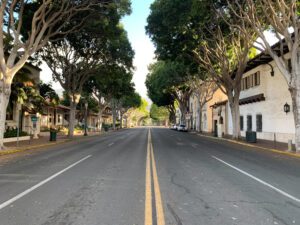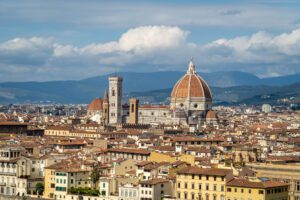Gluten Free Travel: How to Travel the World 100% Gluten Free
Gluten free travel can be hard. It can be stressful. It can be annoying. Believe, me, after a decade of traveling the world with Celiac Disease, I get it. Even now, I go through bouts of anxiety and being terrified that a meal I’m eating isn’t safe. It’s totally okay to be feeling overwhelmed and anxious about traveling, whether you’re a newly diagnosed Celiac, or someone that’s been living with Celiac Disease for decades.
But here’s the thing: I also believe that it doesn’t have to be that way.
If you have a strategy for traveling gluten free, it can go a long way towards eliminating that stress and anxiety that often comes with stepping outside your comfort zone when you’re living with Celiac Disease. Just like you have a strategy for your own kitchen at home (mine is summed up with “GET THAT GLUTEN OUT OF HERE”), having a strategy while you’re traveling will help you feel safe, confident, and allow you to immerse yourself in the excitement and wonder that comes with exploring a new place.
In this guide, I’ll lay out my strategy for gluten free travel, including:
- 10 essential tips for traveling gluten free
- What to pack for your trip
- Where to stay – Airbnb or Hotels? (plus a third option in-between)
- Exactly how to find gluten free restaurants
- What to ask restaurants to see if they can provide you a safe gluten free meal


What to Read Next:
- The Complete Guide to Eating Out Gluten Free
- The Best Gluten Free Travel Snacks
- The Best Gluten Free Road Trip Snacks
- 10 Incredible Gluten Free Travel Destinations
Disclaimer: Some of the links in this post are affiliate links, meaning at no additional cost to you, I make a little bit of money if you click through and book. That being said, I would never recommend something to you that I don’t stand behind 100%.
10 Essential Tips for Traveling Gluten Free
Here are ten tips for traveling gluten free that I’ve learned over more than a decade of living and traveling with Celiac Disease.
These tips are based on my personal experiences, and your preferences or needs might be slightly different. But these ten tips are a great starting point for planning a safe gluten free trip to basically anywhere in the world.
1. Book a Place to Stay with Access to a Kitchen
Choose an Airbnb with a kitchen for stays of more than a day or two to give yourself plenty of flexibility to cook for yourself. Especially in places where there aren’t as many safe gluten free options. In Colombia, we stayed exclusively at places that had access to a kitchen (and had our own set of pots, pans, and utensils too) and ended up cooking for ourselves 90+% of the time.
Not only was it cheaper, but we were able to experience a beautiful, diverse country without worrying about where we would find our next meal. Plus, we got to see it through a slightly different lens – going to the market, buying all sorts of fruits and vegetables, and cooking for ourselves, rather than dining out for every meal.
If you do end up in a hotel, try to pick one that has a mini-fridge, microwave, and electric kettle if you can. I’ve lived for a weeklong business trip out of a mini-fridge before.
2. Explore the Local Grocery Stores
Make the grocery store your first stop in a new, unfamiliar place. It’s a great way to feel at home and grab a few safe gluten free staples like fresh fruits and vegetables or cheese.
While the language might be different, what you find in a grocery store in Colombia or Hungary is not particularly different than what you find at home. It’s also a great way to discover some new gluten free treats – we discovered these wafer cookies in Colombia and ended up buying three or four packs to bring back with us because they were so delicious.
3. Learn the Language (or, Parts of It)
Know how to say “gluten free” and “I have Celiac Disease” in the local language. The former so that you’ll recognize it on food packaging at the grocery store and restaurant menus, the latter so that you can communicate with servers. If you don’t feel confident in your ability to communicate in the local language (we’ve all been there, believe me)…
4. Invest in a Gluten Free Restaurant Card that Mentions Cross-Contamination
Travel with a gluten free restaurant card that explains your needs in the local language. This tool is a staple that I nearly always bring with me on international trips. It will help you travel confidently, knowing your ability to get safe gluten free food doesn’t rely on your ability to speak the language.
The anxiety is REAL. I remember trying SO HARD to learn German before a trip to Germany. When I had my first opportunity to bust out all my practice, it came at a small restaurant in Rothenburg ob der Tauber, and I was trying to figure out if they could serve me a safe meal (mostly I was worried about the fryer). I tried to say “Ich habe Zoliakie” just like I had practiced, and she basically laughed at me. Unfortunately, her English was about as good as my German.
ENTER GLUTEN FREE RESTAURANT CARD TO SAVE THE DAY!
I showed her my translation card, and she took it back to the chef (who, it turns out, spoke English well) and I ended up with a safe meal with far less stress.
IMPORTANT: That card needs to mention cross-contamination, which is 90% of the battle. Most don’t, which is why I recommend the cards from Legal Nomads and use them all the time on my travels. More on that below.
5. Do the Research Ahead of Time
Do your research ahead of time. Have a plan and a good idea of the places you might be able to eat. I like to use Google Maps saved places to save places I want to eat, then I download the offline map of the area so I can access it even if I don’t have service or WiFi access.
That way, I can visualize our plans and see any gluten free options near the attractions we’re visiting, or near where we’re staying.
6. A.B.S.
One of my top rules for life in general is A.B.S. No, not those abs, which are hard to find when there are gluten free donuts to be eaten. Always. Bring. Snacks. The worst possible scenario is to be caught hangry and unable to think clearly about where I’m going to eat.
Pack a few portable snacks in your day bag that you can pull out when you’re a little hungry.
I usually pack some bars and bites from the Gluten Free Bar, Kind Bars (Blueberry Pomegranate and Cranberry Almond are my jam) and nuts (either from Nuts.com or Wonderful Pistachios).


7. Request a Meal on International Flights in Advance
Request your gluten free meal on an International Flight at least a week in advance. Then call the airline to confirm 48 hours out. When we flew to Colombia, they forgot my gluten free meal. Because I neglected that last step.
It’s also worth reaching out to hotels ahead of time to see if they will be able to have gluten free options at breakfast for you, but I would be wary of cross-contamination.
8. Bring a Few Easy Meals from Home
Bring a few easy gluten free meals with you that can be made in a microwave or with boiling water. In that scenario above, where our airline forgot my meal, it would have been a problem if I didn’t have a Lotus Foods Ramen Cup in my carry on.
I simply asked the flight attendant to fill it up with boiling water, and went on my merry way (after pouting for about three minutes because Alysha had her food and I was hangry).
I’d recommend packing a few easy breakfasts (GFB oatmeal is the best!) and some lunch/dinners like Lotus Foods ramen noodles, or even backpacking meals, which you just need boiling water to make. Backpackers Pantry Pad Thai and Good-to-Go Yellow Curry are amazing, especially for freeze-dried meals.
All of those options just require boiling water, which you can usually find on a flight or at a hotel.


9. Explore Local Food Culture with Food Tours & Cooking Classes
Food Tours and Cooking Classes are an incredible way to experience the food culture of a place when you’re worried about eating out. AS LONG AS YOU COMMUNICATE YOUR NEEDS TO THE HOST.
Not only will you spend more time interacting with a local who can be super helpful in giving you insider knowledge about hidden sources of gluten, but they will be able to help you communicate your needs.
We’ve done a street food tour in Mexico City and countless cooking classes around the world and we have had nothing but unforgettable experiences.
Cooking classes in particular are a great option for traveling gluten free, but it probably isn’t a great idea to try to book a croissant making class, or a pasta making class. Always reach out to the host ahead of time to confirm they can accommodate your needs.

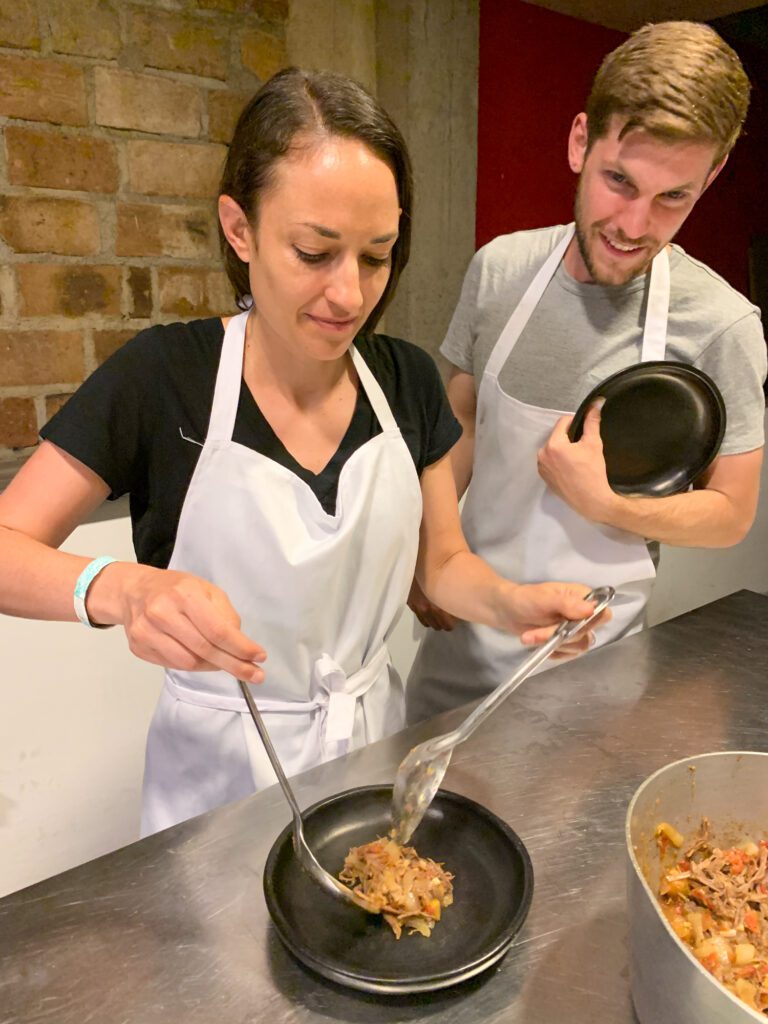

10. Cook For Yourself and You Can Travel Anywhere
You can travel literally anywhere in the world if you are willing and able to cook for yourself. That means you’ll need to book places to stay that have a kitchen, and either bring a clean set of pots, pans, and cooking utensils (best on a shorter trip) or buy them when you get there (for longer trips).
Then, head to the grocery store when you arrive and pick up some fresh fruits and veggies, eggs, cheese, and some sort of grain (rice is a good bet), and you’re ready to go!
I’ve used this strategy in Colombia, Chile, and even parts of New Zealand with great success. And you know what? I don’t even think about the fact that I had to spend part of those trips cooking, because the rest of the trips were so incredible.
Here are some amazing gluten free meals we’ve cooked over the course of 2020 in Mexico and Colombia.
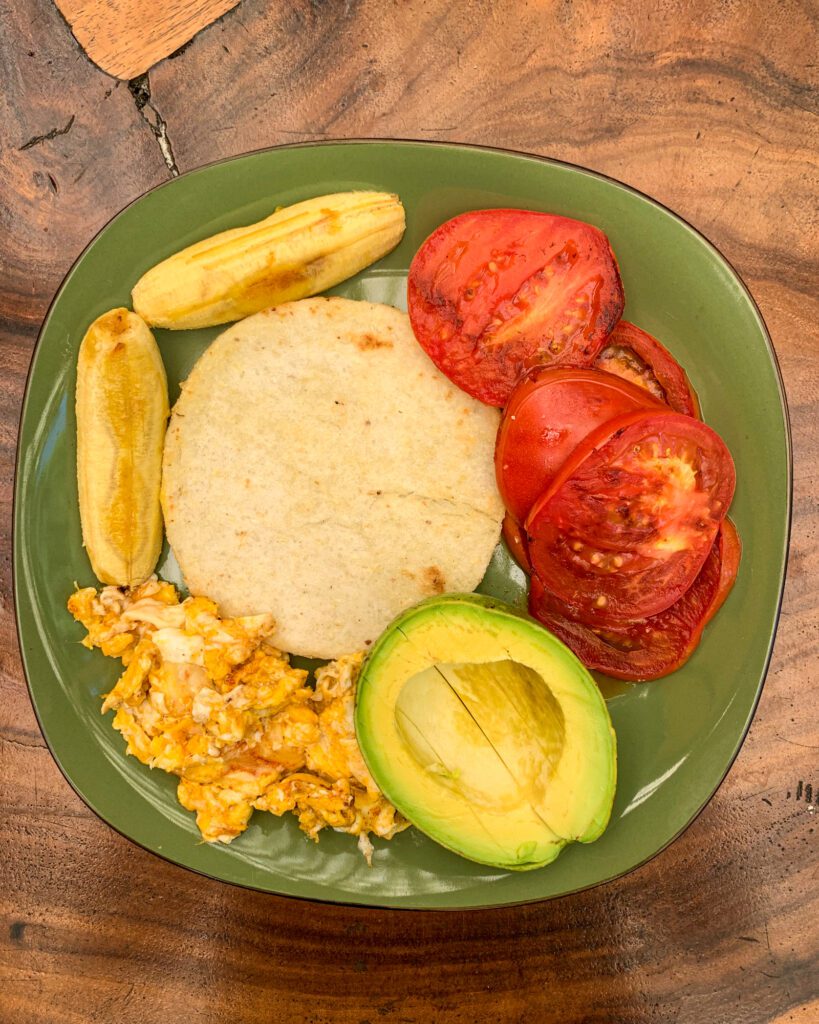



Your New Secret Weapon: Gluten Free Restaurant Cards
If you’ve ever traveled internationally with Celiac Disease to a place with a language barrier, you know that it can be stressful. If you haven’t, take my word for it. I Practiced saying “ich habe Zoliakie” before my Germany adventure at least a hundred times, only to have the first server I said it to say “It’s okay, you can speak English.”
Lucky for me, she spoke English. Otherwise I would have been out of luck.
And that’s where gluten free restaurant cards come in.
These have played a huge role in unlocking gluten free travel for me. They’ve made me feel comfortable, confident, and safe by eliminating the language barrier and allowing me to clearly communicate my needs and get gluten free food every time.
No more guessing. No more stressing. Just safe gluten free food.
I recommend the cards from Jodi over at Legal Nomads. They are specifically developed with the country in mind, they include a note on cross-contamination, and they are professionally translated by a native speaker (who is usually also a Celiac).
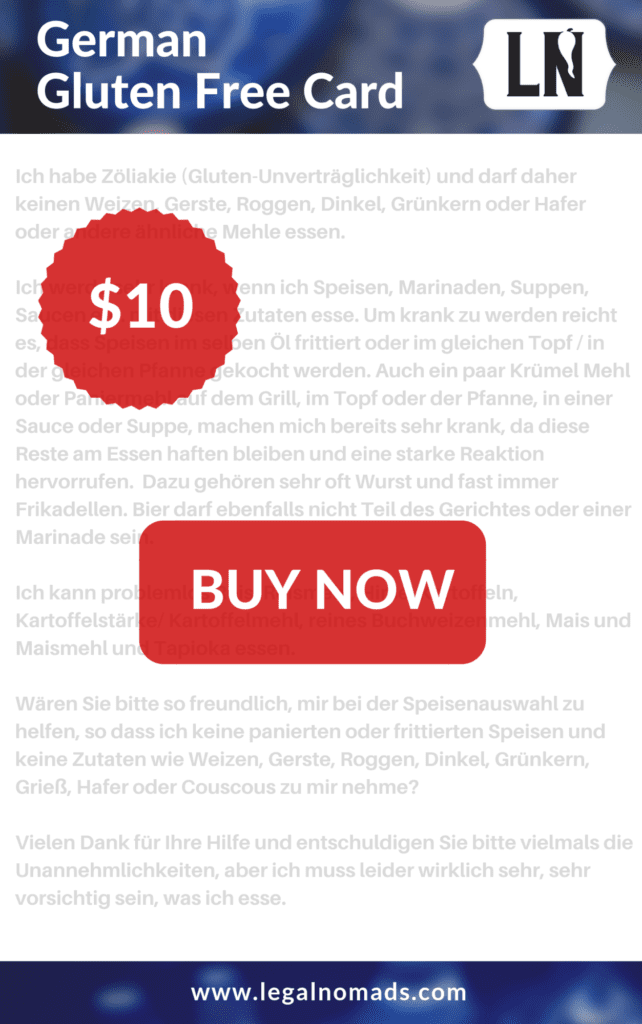
They are my secret weapon for traveling gluten free to a place with a language barrier and they’ve enabled me to travel to places like Colombia and Germany, where I didn’t speak the language well enough to ask about shared fryers.
It’ll cost you $9, and it’s going to save you an unmeasurable amount of anxiety when you’re on your trip. Which, I think, is priceless.
There are plenty of free cards out there on the internet, but it is critical that whatever card you choose MENTIONS CROSS-CONTAMINATION, which is like 80% of the battle when you’re eating out with Celiac Disease. That’s why I love Jodi’s cards.
Here are the cards that Jodi has for sale
What to Pack
In general, you’re going to have more food in your suitcase than the average traveler. And maybe a frying pan and spatula. TSA might look at you funny, but it’s perfectly fine to bring non-liquid food through security.
A big jar of peanut butter is the only thing that I’ve ever had confiscated. Come on TSA – I’ve accidentally ended up with a pocket knife on a plane MULTIPLE TIMES (whoops, forgot I had that in this backpack) but you’re worried about a jar of peanut butter? Got it.
What to Pack for a Short Trip
If you’re headed out on a weekend getaway, no need to go too crazy.
Pack some snacks, a frying pan, a sauce pan, and a spatula if you’re worried about using shared cooking utensils (which I am), and one or two easy breakfasts and lunches that you can make with boiling water or in a microwave.
Toaster bags are a good way to eliminate cross-contamination in toasters too! Those are a new discovery for me, and I have them but have never used them. Others have had great success with them, so I’m planning on bringing them on our next adventure.
What to Pack for an International Trip
Headed out on a longer, potentially international trip? I’d pack a few more things to be safe. I’m going to assume this is a 10-14 day trip, which is pretty common for international trips.
- A gluten free restaurant card, if there’s a language barrier.
- Toaster bags so you can use the toaster at your hotel / Airbnb.
- 1-2 snacks per day (GFB Bars, GFB Bites, Kind Bars, Justin’s nut butter packets, Country Archer beef jerky, Wonderful pistachios).
- 3-4 easy on-the-go gluten free breakfasts, like GFB Oatmeal, which comes with its own bowl!
- 3 easy on-the-go gluten free lunch or dinner options. I like Lotus Foods Ramen and backpacker meals – Backpackers Pantry Pad Thai and Good-to-Go Yellow Curry are the two best gluten free backpacking meals I’ve ever had).
- One loaf of your favorite gluten free bread, preferably vacuum sealed. Just in case you can’t immediately find gluten free bread where you’re headed.
Where to Stay When You’re Traveling Gluten Free
Our philosophy has always been that we want to strive to experience a city like a local, even if it’s for a few days. I know that’s hardly possible given we’re only there for less than a week, but it’s a romantic idea. I want to wander our neighborhood on foot, stop by the local coffee shop on the corner, and head over to the market a few blocks over to grab supplies for a meal.
Our first step in researching where to stay is to identify the 2-3 best neighborhoods that offer a blend of central location, plenty of good coffee shops, markets, and local businesses, and not too much of a party vibe. We avoid staying the usual tourist neighborhoods at basically all costs – think Union Square or Fisherman’s Wharf in San Francisco, or the Champs-Élysées in Paris.
Once we have those neighborhoods picked out, our next step is to find a few specific places to stay.
We write curated where to stay guides for our favorite cities that we travel to, which feature the best areas to stay in, and our hotel and Airbnb picks based on the hours of research we put into our travels. If you’re traveling to one of those places, that’s a great starting point.
Airbnb vs. Hotels
For a stay of more than a day or two, I almost always opt for an Airbnb over a hotel. I like having my own space and access to a kitchen, plus it fits with our overall travel philosophy of striving to experience a city more like a local than a tourist.
Airbnb has its drawbacks, like it’s negative impact on housing markets that are already strained, and isn’t available everywhere.
For me, the positives outweigh the negatives, though I believe we should do a better job collectively at dampening the negative effects.
There are basically two exceptions, aside from when there just aren’t any good options available because we’re booking late, when hotels might be a better choice than Airbnb.
- Stays of 1-2 nights. Cleaning fees are fixed on Airbnb, so you’ll pay the same $50 for a stay of one night or a week. Often that makes staying in an Airbnb more expensive than a hotel for stays of one or two nights.
- We need a flexible check-in time. It’s much harder to check in early to an Airbnb, or even leave your bags. If you’re heading to London or Colombia on a red-eye, you’re not going to want to haul your bags around for a day after you arrive at 7am. Hotels give you a better option for dropping your bags off or even checking in early. Stay in a hotel for that day you arrive, drop your bags off, and then move to an Airbnb if that’s what you’re ultimately looking for.
If you choose a hotel, see if you can get a mini fridge, microwave, and an electric tea kettle, which will make your life easier.
What About Hostels?
Recently, we have found ourselves on a tigher budget since we quit our jobs to travel the world. And we’ve started to fall in love with hostels.
Now, I want to be clear. We’re far too old to be staying in dorm rooms at party hostels. After all, my bedtime is about 8:30pm.
So what I’m talking about here are private rooms in “boutique hostels”, which are basically a cross between a boutique hotel and a hostel. More and more, we’re finding these “boutique hostels” popping up all over the world, and we’re on board.
You’ll get the social atmosphere of a hostel, where you can meet like-minded travelers from all over the world, you get a private space (sometimes with a shared bathroom for a discount), and you often get access to a shared kitchen, which is something you should be prioritizing to give yourself flexibility.
It’s a great way to get the best of a hotel experience plus access to a kitchen, and the best part is that it’s usually cheaper.
Gluten Free Travel Guides
I have gluten free travel guides for cities around the world. Each of these guides is based on personal experience, although some of them are from trips that happened before I had started this blog. Which also happens to be before I started taking pictures of literally everything I eat. So some are lacking food pictures.


I started this site after I sent my friend my Excel spreadsheet that I used to plan a trip to Berlin and Amsterdam, and she replied “you know, you should totally put these online for people to use.”
And here we are.
I have vetted each restaurant in these guides for my trip, but please note that things change all the time in restaurants, and you need to reach out to the places you’re interested in ahead of time to confirm that they can serve you.
Gluten Free USA
- Gluten Free Philadelphia: A Complete Guide for Celiacs
- Gluten Free Boston: A Complete Guide for Celiacs
- Gluten Free Portland: A Complete Guide (By Locals)
- Gluten Free San Diego: A Travel Guide for Celiacs
- Where to Find Gluten Free Beer in Portland, Oregon (Breweries + Bottle Shops)
- Gluten Free Los Angeles, CA: A Complete Guide for Celiacs
- Gluten Free Santa Barbara, CA: A Complete Guide for Celiacs
- Gluten Free in Boulder, CO: A Complete Guide for Celiacs
- Gluten Free Denver: A Complete Guide for Celiac Foodies
Gluten Free Europe
- Gluten Free Venice: A Complete Guide (for Foodies)
- Gluten Free London: A Complete Guide (for Foodies)
- Gluten Free Madrid: A Complete Guide
- Gluten Free Barcelona: A Complete Guide
- Gluten Free Rome: A Complete Guide for Foodies
- Gluten Free Florence, Italy: A Complete Guide for Celiacs
- Gluten Free Milan: A Complete Travel Guide for Celiacs
- Gluten Free Paris: A Complete Guide (for Foodies)
- Gluten Free Lisbon: The Best GF Restaurants (for Celiacs)
Gluten Free Canada
- Gluten Free Montreal: A Complete Guide for Celiacs
- Gluten Free Banff: 6 Celiac-Friendly Restaurants for your Trip
- Gluten Free Victoria, BC: The Best Restaurants for Celiacs
- Gluten Free Vancouver, BC: A Complete Guide for Celiacs

How to Find Celiac-Safe Gluten Free Restaurants
When I’m planning a trip, I follow a simple two step process for finding Celiac-safe gluten free restaurants around the world.
I like to break it down into two phases: 1) make your list and 2) check it twice.
I love Christmas.
Read my guide to eating out gluten free for a deep-dive on exactly how I find safe gluten free restaurants around the world.
Making a List of Potential Restaurants
There are three places I look.
First, I start with Find Me Gluten Free, a great app that has crowd-sourced reviews from the gluten free community.
There is one big thing you need to watch out for – the reviews aren’t always 100% reliable, which is why you need to reach out to each restaurant individually.
Here are a few tips for using FMGF:
- Filter by “Dedicated Gluten Free” first. I always recommend dining in 100% gluten free places when you’re traveling with Celiac Disease, but they aren’t always plentiful. Doing this makes it so that you can find those gems and add them to your list.
- Sort by rating, but know that sometimes the top rated restaurants are not actually in the city you searched in. For example, if you look at the highest rated restaurants in San Francisco, you’ll get a bunch that are a 30+ minute drive outside the city. Just something to watch out for.
- Focus on the “% safe for Celiacs.” The star ratings are important, but I use the % who say it’s safe for Celiacs as a directional guide for whether or not they should make the list. Which leads me to my last point…
- YOU HAVE TO READ THE REVIEWS. Half the time, I’ll read through the reviews of a place that looks otherwise safe, with a 5 star rating and 100% of people say it’s safe, and every single review either says “great food didn’t get sick” or is at least 4 years old. For the record, “I didn’t get sick” is not a good proxy for whether a restaurant is safe for Celiacs. Read the reviews to see if they, for example, have a dedicated gluten free fryer, or prep spaces.
Second, I’ll head over to TripAdvisor, Yelp, or the local equivalent, and search “Celiac.” Not gluten free, you have to search Celiac. Their definition of “gluten free options” is underwhelming at best, and wrong at worst. I usually find a few more restaurants on those platforms that I feel good about adding to the list.
Third, I’ll google “gluten free [city],” which is almost certainly how you ended up here. I’ll look for local Celiac bloggers who have written about the city or place I’m going to, and see if there are any places I overlooked in my research.
Depending on where you’re going, you should have a nice list of restaurants that seem to be able to serve Celiacs. But it doesn’t end there.
Read more: How to Find Gluten Free Restaurants Around the World
Check that list twice
Do you think Santa reads that Jimmy was good this year and takes that as gospel? No. He checks his list twice to make sure that Jimmy wasn’t naughty.
And that’s what you need to do too.
Things at restaurants change ALL THE TIME, and the information you read might be out of date. You need to reach out to each restaurant on your list individually.
Lucky for you, I have an email template that you can use to streamline this process. Go to the restaurant’s website, find their “contact” email address (usually on the “Contact Us” page or in the website footer) and send them something like this:
Hey there,
I’m visiting [place] soon and your restaurant looks amazing.
I am reaching out because I have Celiac Disease, and I need to eat 100% gluten free. It is not a lifestyle choice – even a crumb of gluten will make me sick for days.
While I was researching places to eat, I came across your restaurant. I am hoping you can help me find something that I can safely eat at your restaurant.Thank you in advance for your help in making sure I have a great dining experience.
When you prepare my meal, can you prepare it in a way to ensure that there is no cross-contamination with gluten? For example, if something is fried in oil that was also used to fry something with gluten, it is not safe for me to eat. If something is prepared on the same surface or in the same pan that was used to cook gluten without a thorough cleaning, it is not safe for me to eat.
Thank you in advance for your help – I really appreciate it.
Cheers,
{name}
Send that email to each place on the list. If you’re traveling to a place with a different language, I usually pop that blurb into Google translate and send it on over in both English and the other language.
If you’re going to a place where most restaurants don’t have a website, you’re in luck. Jump to the next section for a tool that will make your life infinitely easier.
Final Thoughts
There you have it – a rundown of the strategy that I have successfully used to plan countless 100% gluten free international trips.
If you’re looking for more on gluten free travel, read this guide to dining out gluten free, which will help you find safe gluten free restaurants and arm you with the questions you need to ask.







